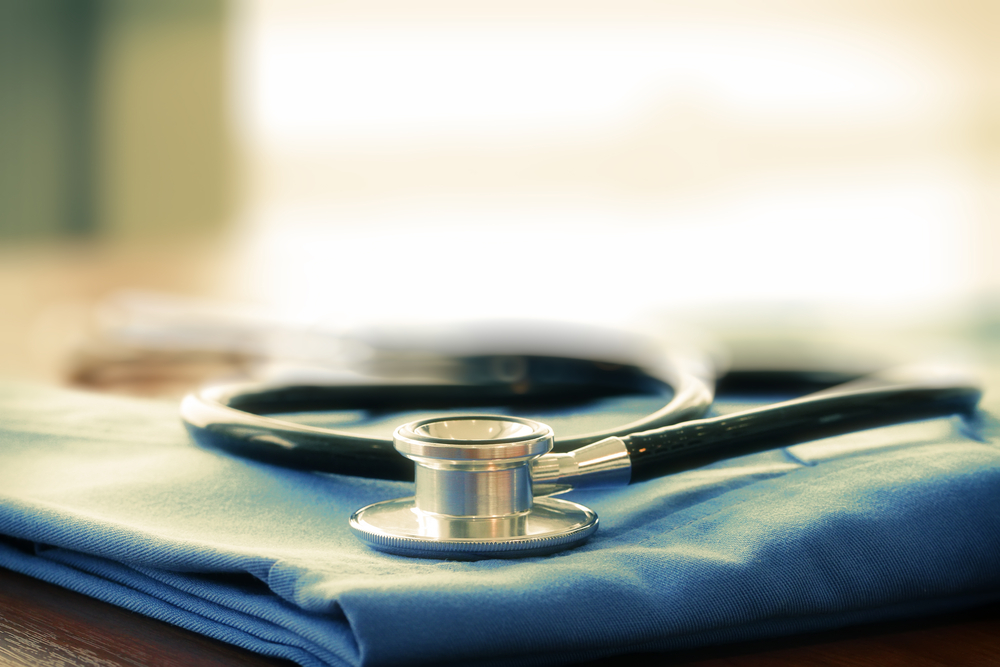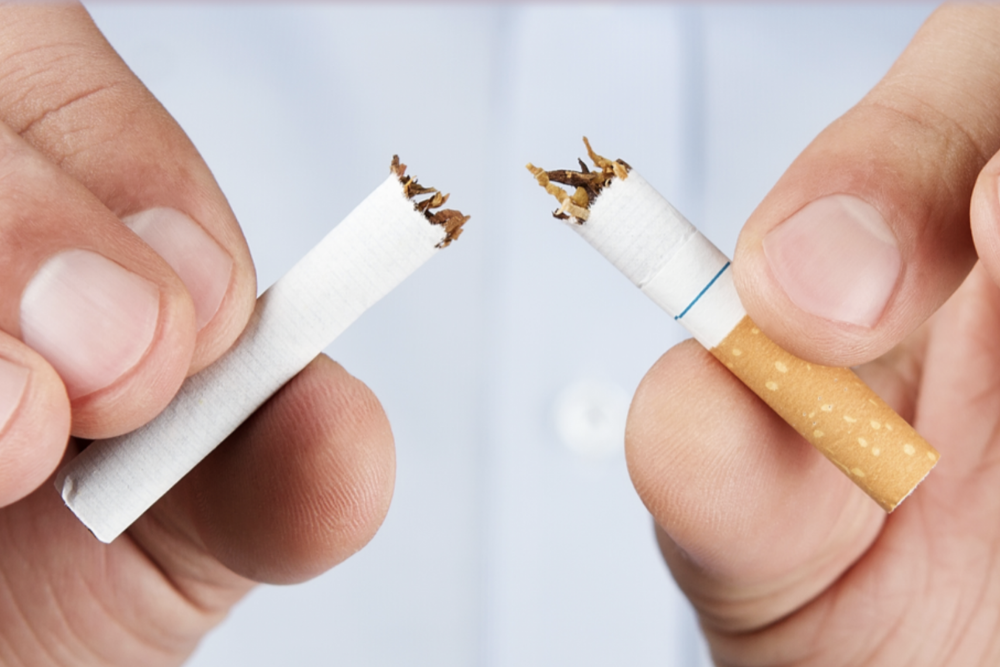According to the World Health Organisation (W.H.O), between 30-50% of all cancer cases worldwide are preventable. In the long run, prevention can actually be a superior cost effective strategy as compared to undergoing treatment for the disease. In that regard, here are some proven tips on how to prevent being stricken with cancer.
1. Health Check-Up

There are diseases like cancer that may not show the symptom in the early stage, so even if there is no indication of illness adults above 40 years of age should seek to have a health check-up at least once a year. The health check-up may include a blood test, blood pressure assessment, physical examination such as colorectal and prostate screening and a chest x-ray. These check-ups can help you locate the problem and possibly able to detect cancer in the early stages.
In some kinds of cancer like cervical cancer this requires women aged 21–65 years to get a Pap test (with or without a HPV testing, every 3 years. Women aged 30 or older need to get a general check-up as well every year. For men aged 50 years and older, it is important to do a Prostate cancer exam annually as well. For example, group age, gender that should start annual checks up according to type of cancer.
-
Breast cancer - Women aged from 40 to 44 have the option to start annual screening with mammogram and breast ultrasound. But for ages 45-49 women should get mammogram and breast ultrasound every year.
-
Colon and rectal cancer - and polyps, for people at average risk American Cancer Society recommends to start regular screening at age 50 .. The most appropriate screening test for colon cancer is the colonoscopy that is, for most people, recommended every 5 years from 50 years of age onwards.
-
Cervical cancer - testing should start at age 21 and ages between 21-29 should have a Pap test every 3 years. Women ages between 30-65 should have Pap and HVP co-testing done every 5 years but it’s ok to have Pep alone every 5 years.
-
Endometrial cancer - All women should be told about the risk and symptoms of endometrial cancer. In the absence of symptoms, there are no specific screening tests to detect endometrial cancer. The transvaginal ultrasound exam is a first-line test to use if any symptom occur.Some women according to their history may need to consider having yearly endometrial biopsy.
-
Lung cancer - The American Cancer Society recommended yearly lung cancer screening with low-dose CT scan (LDCT) for certain people at high risk for lung cancer:
-
Ages between 55-74 years in fairly good health
-
Currently smoke or have quit smoke in part 15 years
-
Have at least 30 pack-year smoking history
-
- Prostate cancer - Starting at age 50 you should talk to your health care provider about pros and cons of prostate screening that include physical examination, a ultrasound of lower abdomen and a PSA test.
2. Know Your Family History
Some types of cancer run in certain families, but most cancers are not clearly linked to the genes we inherit from our parents. Gene changes that start in a single cell over the course of a person's life cause most cancers. There are chances that you have inherited faulty genes and it is important to know your family health history. Telling the doctor about your family health is the first step, then the doctor can analyze what kind of test or care is required.
Sometimes, certain types of cancer seem to run in some families. This might be because family members share certain behaviors or exposures that increase cancer risk. Some of these are discussed briefly here as examples. For more information about a particular type of cancer and its genetic components, diagnosis, and treatment, please see our content on that specific type of cancer. Such as hereditary:
-
Brest and Ovarian Cancer,
-
Hereditary non-polyposis colorectal cancer
However, a gene is not the main or only reason for you to develop cancer. There are also healthy lifestyle and other circumstances that might put you at more risk.
3. Quit Smoking or Chewing Tobacco

Tobacco is the largest and most avoidable risk factor for cancer which kills approximately 6 million individuals every year through cancer and other chronic diseases1. Tobacco is a primary ingredient in cigarettes. When smoked, tobacco releases up to 7,000 chemicals into your body1. At least 250 chemicals in this equation are known to be harmful to the human body, with over 50 of these same chemicals being known to increase the risk of suffering from different types of cancer1. These include cancers of the lungs, mouth, throat, kidneys and bladder
There are a number of methods which can be used to help you quit smoking effectively, especially if you’ve tried too before but failed. For example, distracting yourself from wanting to pick up a cigarette by avoiding possible smoking triggers such as alcohol consumption and stress. To help with the distraction, indulge in frequent snacks consisting of fruits and vegetables and stick to an effective workout routine. Quitting smoking can also prevent the inhalation of secondhand smoke, which can also increase the risk of your loved ones being affected by cancer. Similarly, chewing tobacco is another habit which has to be kicked to the curb to lower an individual’s risk of being affected by cancer. Although smokeless, this common habit amongst adults living in marginalised countries such as Myanmar and Nepal can also cause cancers of the oral cavity and pancreas.
4. Eat More Fruits and Vegetables
The type of food you put in your body can have a large impact on your quality of life and can either increase or decrease your risk of being affected by chronic diseases. One of the best foods to consume to prevent cancer is broccoli. This is because broccoli contains sulforaphane, a plant compound that contains anti-cancer properties which can be mostly found in cruciferous vegetables. In fact, various studies have shown that this compound is actually able to reduce the size of cancerous cells significantly. For example, a test tube study revealed that sulforaphane reduced the number and size of breast cancer cells by up to 75%. Some studies have also found that a higher intake of cruciferous vegetables containing sulforaphane was also linked to a reduced risk of prostate cancer.
The consumption of berries too has been associated with a reduced risk of cancer. This is mainly attributed to their high contents of plant pigment called anthocyanin, which also possesses antioxidant properties. The laboratory evidence, antioxidants may slow or possibly prevent the development of cancer. Antioxidant neutralise free radicals as the natural by-product of normal cell processes. Free radicals are molecules with incomplete electron shells which make them more chemically reactive than those with complete electron shells. Exposure to various environmental factors, including tobacco smoke and radiation, can also lead to free radical formation. In humans, the most common form of free radicals is oxygen. When an oxygen molecule (O2) becomes electrically charged or "radicalised" it tries to steal electrons from other molecules, causing damage to the DNA and other molecules. Over time, such damage may become irreversible and lead to disease including cancer. Antioxidants are often described as "mopping up" free radicals, meaning they neutralise the electrical charge and prevent the free radical from taking electrons from other molecules.
A number of studies have been conducted to prove the effectiveness of berries in lowering the risk of cancer. For instance, one human study of 25 people with colorectal cancer found that eating bilberries for one weeks duration was able to reduce the growth of their cancer’s cells by 7%. In another study, patients with oral cancer were given freeze-dried black raspberries to eat and were found to have lower levels of cancer progression markers after consuming the berries.
Therefore, eating one or two servings of berries daily may aid in mitigating the risk of cancer.
5. Engage in Increased Levels of Physical Activity
A panel of experts, which included researchers from the American Cancer Society and the American College of Sports Medicine developed a new guidance that endorsed physical activity as prevention for bladder, breast, colon, esophageal, kidney, stomach and uterine cancer. The guidance also noted that exercise improved the survival rates of patients with breast, colon and prostate cancer. One of the reasons is that physical activity helps maintaining healthy body . It also mooted that exercise do improve the quality of life for these same individuals by reducing the side effects of their cancer treatment.
To prevent cancer, the recommended amount of general physical activity is up to 150 minutes of moderate exercise or 75 minutes of vigorous exercise per week. The panel also pointed out that engaging in regular physical activity contributed to reducing inflammation; regulates blood sugar levels and sex hormones level as well as improving metabolism and immune functions.
6. Limit Skin Exposure to the Sun

Skin cancer is a common type of cancer which can be easily prevented by incorporating several different skin protection tips.
When you are outdoors, one of the best ways to prevent skin exposure to the sun’s ultraviolet (UV) rays would be to actively seek out shaded areas. If you have no choice but to be directly under sunlight, opt to use a broad-spectrum sunscreen with an SPF of 30 or higher to avoid skin exposure to the sun’s ultraviolet because it may of damage the DNA in skin cells leading to skin cancer.
For prolonged exposure under sunlight however, this same sunscreen should be reapplied every couple of hours, more often if you're sweating. Alternatively, you should also consider wearing brightly colored clothing as it is able to reflect the sun's UV rays more effectively than pastels or bleached cotton.
7. Make Sure Your Vaccinations are Up to Date
Interestingly enough, cancer prevention also involves you to be sure that all your mandatory vaccinations are up to date. These include vaccinations:
-
for Hepatitis B and
-
the Human Papillomavirus (HPV)
Hepatitis B is a disease which can put you at an increased risk of liver cancer. The Hepatitis B vaccination is recommended for those who may be unaware that they are at risk of contracting this disease. These individuals include those who are sexually active but not in a monogamous relationship, those who have sexually transmitted infections (STI’s), those who use intravenous drugs, men who engage in sexual intercourse with other men and those who work in an environment where they are exposed to infected blood or body fluids on a regular basis.
HPV, on the other hand, is a sexually transmitted virus which can put you at risk of cervical cancer, other genital cancers and squamous cell cancers involving your head and neck.
Implementing these tips can help you reduce the risk of suffering from cancer if you remain disciplined and be consistent with the daily healthy practices. At the same time, regular self-examinations and screenings for cancers such as skin, colon, cervical and breast cancers are encouraged. These examinations can help you to detect early warning signs of any cancer and increase your chances of treating it at an early stage, where the odds of successfully eliminating the cancerous cells will most likely be in your favour..
If you want to know about the health insurance that covers cancers from Luma, fill in the form below and click submit. Our consultant will contact you within 24 hours. 
.png)
